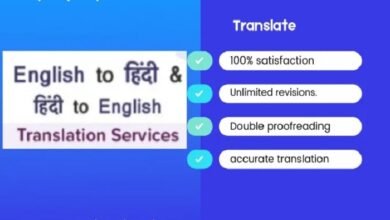
Introduction
In the fast-paced digital age, typing efficiency is more crucial than ever. Whether you’re a student, a professional, or just someone who spends a significant amount of time on a computer, mastering Baba Typing can transform your productivity. This comprehensive guide will delve into the principles, techniques, and benefits of Baba Typing, offering practical tips to enhance your typing skills.
What is Baba Typing?
Baba Typing is a specialized typing technique designed to improve typing speed and accuracy. Unlike traditional typing methods, Baba Typing emphasizes the ergonomic use of fingers and hands, reducing strain and increasing typing efficiency. By adopting Baba Typing, users can achieve higher words-per-minute (WPM) rates and minimize typing errors.
The History of Baba Typing
The origins of Baba Typing can be traced back to the early 2000s when computer usage began to surge globally. Typing educators and ergonomic specialists collaborated to create a system that would not only enhance typing speed but also promote healthier typing habits. Baba Typing quickly gained popularity due to its focus on natural hand movements and reducing repetitive strain injuries.
Importance of Typing Speed and Accuracy
In today’s digital world, typing speed and accuracy are essential skills. Baba Typing helps users achieve both by teaching efficient finger placement and minimizing unnecessary hand movements. Improved typing speed can save valuable time in both professional and personal tasks, while accuracy ensures clear and error-free communication.
Key Principles of Baba Typing
Baba Typing is built on several core principles:
- Ergonomics: Proper hand positioning to reduce strain.
- Finger Efficiency: Using the correct finger for each key to maximize speed.
- Consistency: Maintaining a steady typing rhythm to improve overall speed.
- Practice: Regular and focused practice to reinforce techniques and muscle memory.
How to Get Started with Baba Typing
To begin your Baba Typing journey, follow these steps:
- Set Up Your Workspace: Ensure your computer and keyboard are at a comfortable height. Your wrists should be straight, and your elbows at a 90-degree angle.
- Learn the Home Row: The home row (ASDF for the left hand and JKL; for the right hand) is the foundation of Baba Typing. All fingers should return to these keys after each keystroke.
- Practice Finger Placement: Familiarize yourself with which fingers are responsible for each key. This reduces the need to look at the keyboard while typing.
Tools and Resources for Baba Typing
Several tools can help you master Baba Typing:
- Typing Software: Programs like TypingClub and Keybr offer interactive lessons and practice sessions tailored to Baba Typing techniques.
- Online Games: Typing games can make practice enjoyable while improving your speed and accuracy.
- Ergonomic Keyboards: Investing in an ergonomic keyboard can support the principles of Baba Typing and enhance your typing experience.
Common Challenges and How to Overcome Them
While learning Baba Typing, you may encounter some challenges:
- Muscle Memory: It takes time for your fingers to develop muscle memory for new typing techniques. Consistent practice is key.
- Speed vs. Accuracy: Initially, focus on accuracy rather than speed. As you become more comfortable with Baba Typing, your speed will naturally increase.
-
Patience:
Mastery of Baba Typing doesn’t happen overnight. Be patient with yourself and celebrate small improvements.
Advanced Techniques in Baba Typing
Once you’re comfortable with the basics, explore advanced Baba Typing techniques:
- Touch Typing: Aim to type without looking at the keyboard. This boosts both speed and confidence.
- Shortcut Keys: Learn common keyboard shortcuts to perform tasks quickly without leaving the keyboard.
- Typing Drills: Regular drills focused on challenging key combinations can further enhance your typing prowess.
The Benefits of Baba Typing
Mastering Baba Typing offers numerous benefits:
- Increased Productivity: Faster typing means you can complete tasks more quickly.
- Reduced Errors: Improved accuracy minimizes the need for corrections.
- Health Benefits: Proper hand positioning reduces the risk of repetitive strain injuries.
- Enhanced Focus: Touch typing allows you to focus more on the content rather than the act of typing.
Baba Typing for Different Age Groups
Baba Typing is beneficial for all age groups:
-
Children:
Early adoption of Baba Typing can set a foundation for lifelong typing efficiency.
- Adults: Professionals can enhance their productivity and reduce strain with improved typing techniques.
- Seniors: Learning Baba Typing can keep seniors engaged with technology and improve their digital communication skills.
Conclusion
Baba Typing is more than just a typing technique; it’s a gateway to greater efficiency and healthier typing habits. By understanding its principles and dedicating time to practice, you can transform your typing skills. Whether you’re typing a report, composing an email, or chatting with friends, Baba Typing will help you do it faster and with greater accuracy. Embrace Baba Typing today and watch your productivity soar.
FAQs
1. What makes Baba Typing different from other typing techniques? Baba Typing focuses on ergonomics and efficient finger movements, which reduces strain and increases typing speed and accuracy compared to traditional methods.
2. How long does it take to master Baba Typing? The time required varies for each individual. With regular practice, most people can see significant improvements in a few weeks to a few months.
3. Can children learn Baba Typing? Yes, children can learn Baba Typing. Starting early can help them develop efficient typing habits that will benefit them throughout their lives.
4. Are there any specific tools needed for Baba Typing? While no special tools are required, using ergonomic keyboards and typing software designed for Baba Typing can enhance the learning process.
5. Can Baba Typing help reduce typing-related injuries? Yes, Baba Typing’s focus on proper hand positioning and efficient movements can help reduce the risk of repetitive strain injuries associated with prolonged typing.


